Abstract
We have analyzed and compared the circadian locomotor activity rhythms of Drosophila melanogaster and D.pseudoobscura. The rhythms of D.pseudoobscura are stronger and the periods shorter than those of D.melanogaster. We have also transformed D.melanogaster flies with a hybrid gene containing the coding region of the D.pseudoobscura period (per) gene. Behavioral assays of flies containing this hybrid gene show that the per protein encoded by the D.pseudoobscura per gene is able to rescue the rhythmic deficiencies of arrhythmic, pero1 D.melanogaster. More important, the rhythms of some of these strains are stronger and the periods shorter than those of D.melanogaster (and those of transformants which carry the equivalent D.melanogaster per gene construct) and hence resemble those of D.pseudoobscura. The results suggest that the primary amino acid sequence of the per gene encodes species-specific behavioral instructions that are detectable when only the per gene is transferred to a different species.
Full text
PDF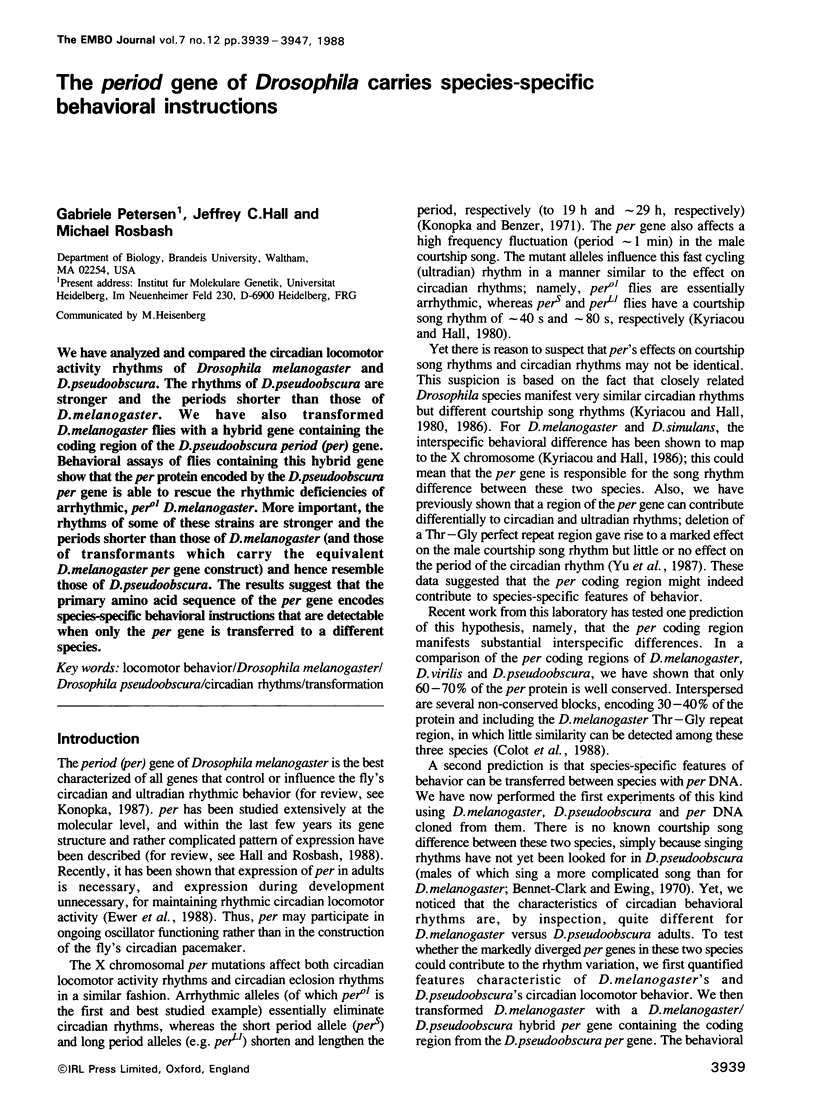
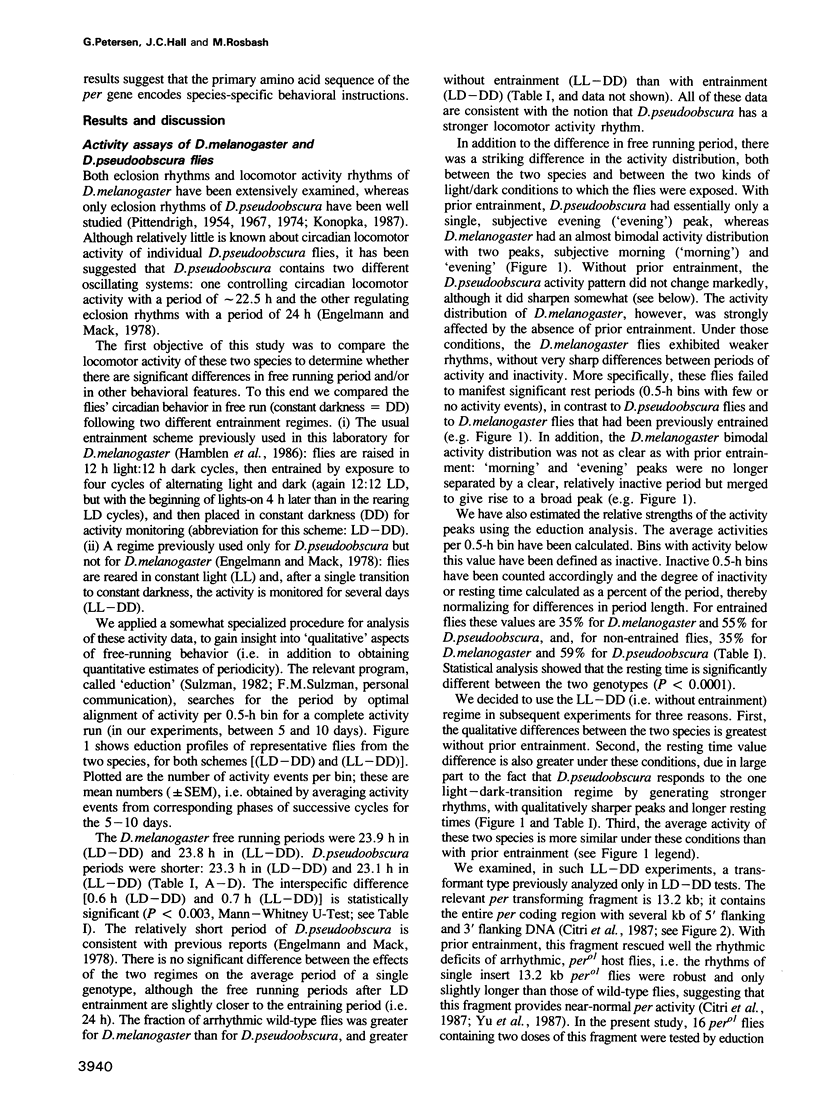
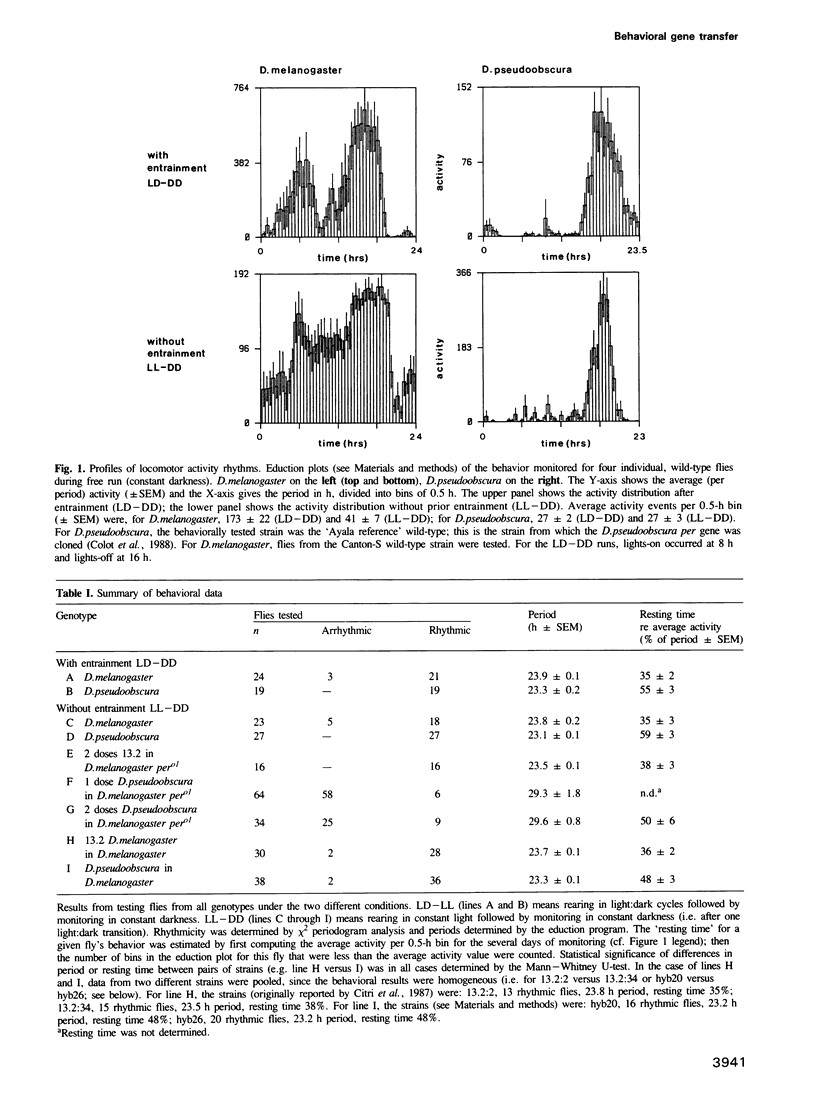
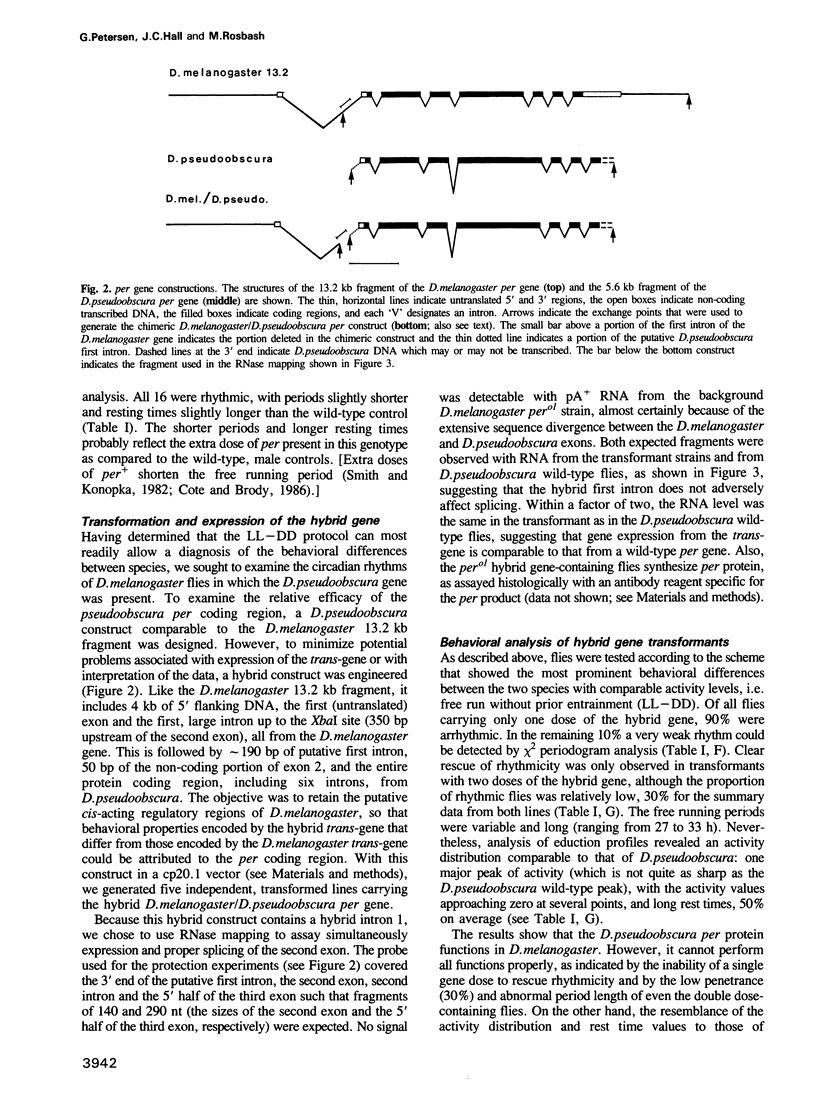
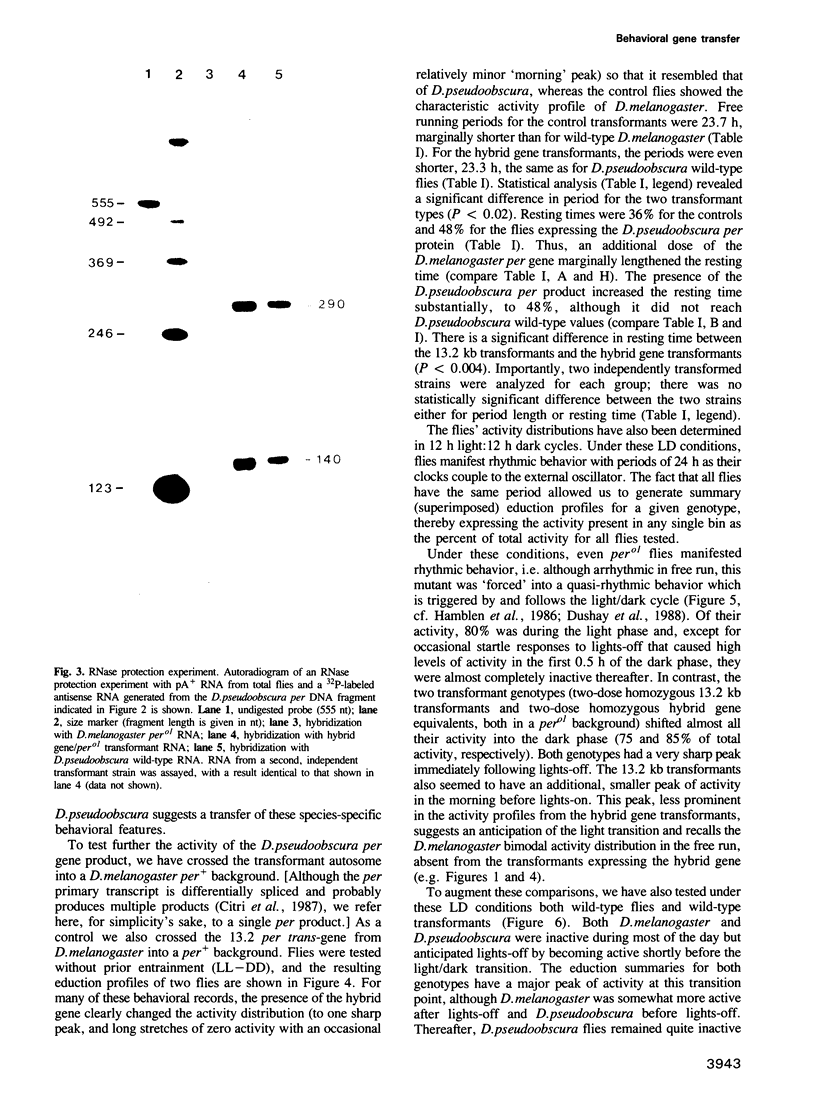
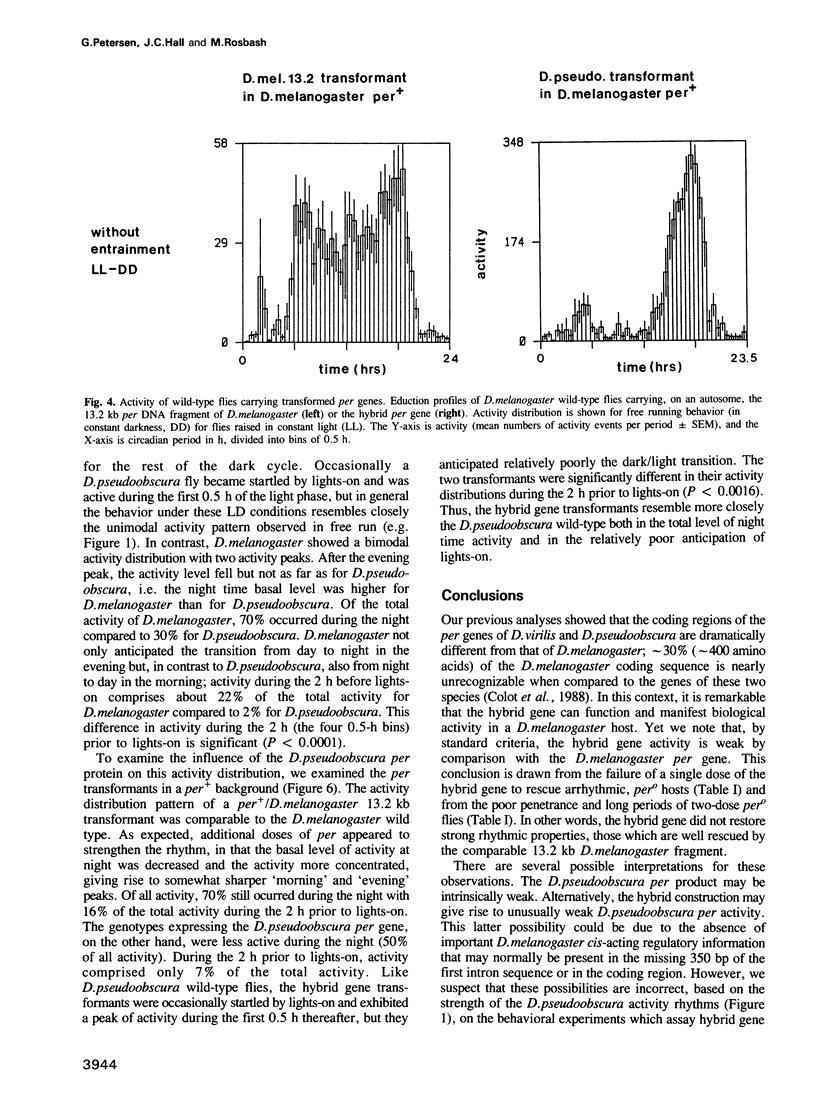
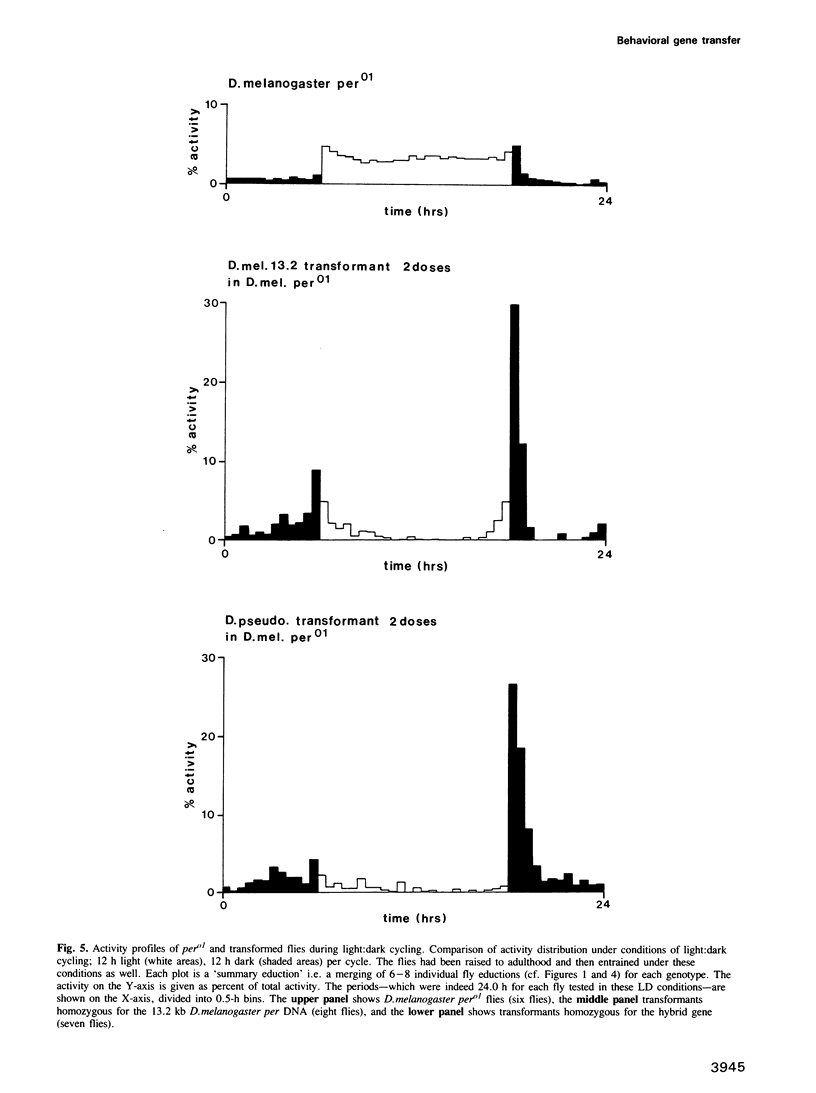
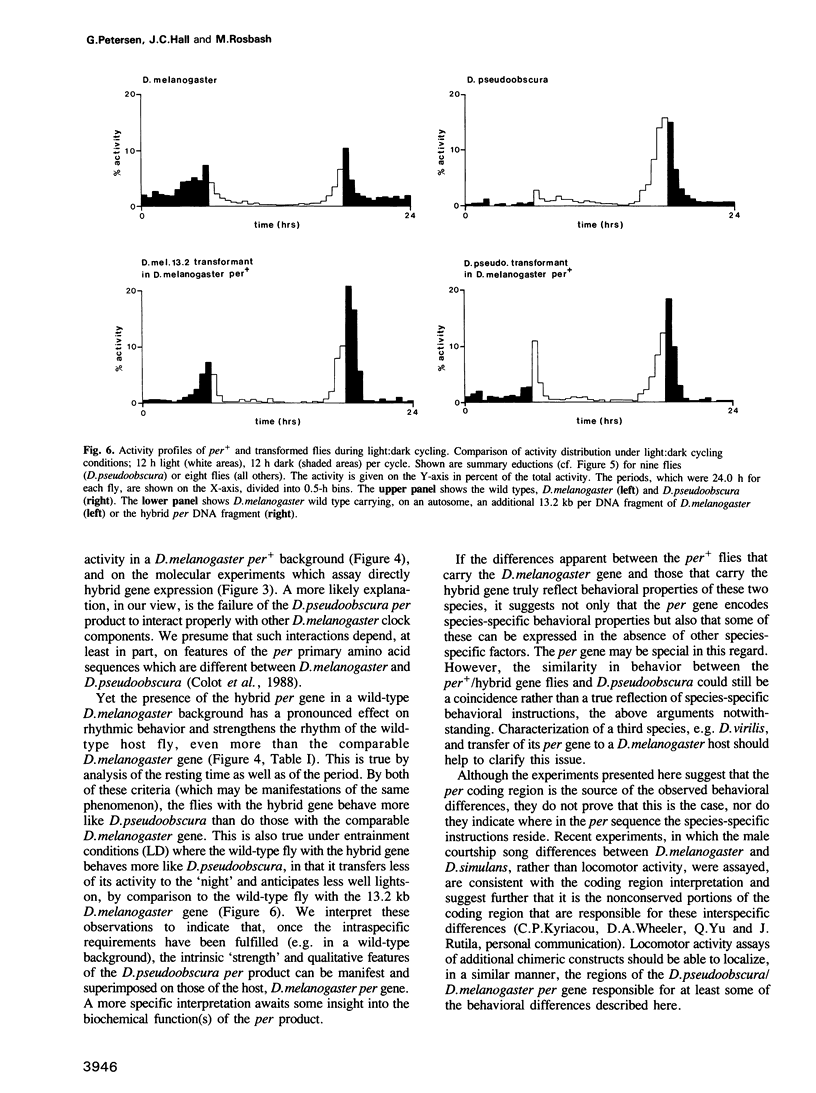

Images in this article
Selected References
These references are in PubMed. This may not be the complete list of references from this article.
- Citri Y., Colot H. V., Jacquier A. C., Yu Q., Hall J. C., Baltimore D., Rosbash M. A family of unusually spliced biologically active transcripts encoded by a Drosophila clock gene. Nature. 1987 Mar 5;326(6108):42–47. doi: 10.1038/326042a0. [DOI] [PubMed] [Google Scholar]
- Colot H. V., Hall J. C., Rosbash M. Interspecific comparison of the period gene of Drosophila reveals large blocks of non-conserved coding DNA. EMBO J. 1988 Dec 1;7(12):3929–3937. doi: 10.1002/j.1460-2075.1988.tb03279.x. [DOI] [PMC free article] [PubMed] [Google Scholar]
- Coté G. G., Brody S. Circadian rhythms in Drosophila melanogaster: analysis of period as a function of gene dosage at the per (period) locus. J Theor Biol. 1986 Aug 21;121(4):487–503. doi: 10.1016/s0022-5193(86)80104-7. [DOI] [PubMed] [Google Scholar]
- Ewer J., Rosbash M., Hall J. C. An inducible promoter fused to the period gene in Drosophila conditionally rescues adult per-mutant arrhythmicity. Nature. 1988 May 5;333(6168):82–84. doi: 10.1038/333082a0. [DOI] [PubMed] [Google Scholar]
- Hall J. C., Rosbash M. Mutations and molecules influencing biological rhythms. Annu Rev Neurosci. 1988;11:373–393. doi: 10.1146/annurev.ne.11.030188.002105. [DOI] [PubMed] [Google Scholar]
- Hamblen M., Zehring W. A., Kyriacou C. P., Reddy P., Yu Q., Wheeler D. A., Zwiebel L. J., Konopka R. J., Rosbash M., Hall J. C. Germ-line transformation involving DNA from the period locus in Drosophila melanogaster: overlapping genomic fragments that restore circadian and ultradian rhythmicity to per0 and per- mutants. J Neurogenet. 1986 Sep;3(5):249–291. doi: 10.3109/01677068609106855. [DOI] [PubMed] [Google Scholar]
- Konopka R. J., Benzer S. Clock mutants of Drosophila melanogaster. Proc Natl Acad Sci U S A. 1971 Sep;68(9):2112–2116. doi: 10.1073/pnas.68.9.2112. [DOI] [PMC free article] [PubMed] [Google Scholar]
- Konopka R. J. Genetics of biological rhythms in Drosophila. Annu Rev Genet. 1987;21:227–236. doi: 10.1146/annurev.ge.21.120187.001303. [DOI] [PubMed] [Google Scholar]
- Kyriacou C. P., Hall J. C. Interspecific genetic control of courtship song production and reception in Drosophila. Science. 1986 Apr 25;232(4749):494–497. doi: 10.1126/science.3083506. [DOI] [PubMed] [Google Scholar]
- Liu X., Lorenz L., Yu Q. N., Hall J. C., Rosbash M. Spatial and temporal expression of the period gene in Drosophila melanogaster. Genes Dev. 1988 Feb;2(2):228–238. doi: 10.1101/gad.2.2.228. [DOI] [PubMed] [Google Scholar]
- Pittendrigh C. S. Circadian systems. I. The driving oscillation and its assay in Drosophila pseudoobscura. Proc Natl Acad Sci U S A. 1967 Oct;58(4):1762–1767. doi: 10.1073/pnas.58.4.1762. [DOI] [PMC free article] [PubMed] [Google Scholar]
- Pittendrigh C. S. ON TEMPERATURE INDEPENDENCE IN THE CLOCK SYSTEM CONTROLLING EMERGENCE TIME IN DROSOPHILA. Proc Natl Acad Sci U S A. 1954 Oct;40(10):1018–1029. doi: 10.1073/pnas.40.10.1018. [DOI] [PMC free article] [PubMed] [Google Scholar]
- Reddy P., Zehring W. A., Wheeler D. A., Pirrotta V., Hadfield C., Hall J. C., Rosbash M. Molecular analysis of the period locus in Drosophila melanogaster and identification of a transcript involved in biological rhythms. Cell. 1984 Oct;38(3):701–710. doi: 10.1016/0092-8674(84)90265-4. [DOI] [PubMed] [Google Scholar]
- Siwicki K. K., Eastman C., Petersen G., Rosbash M., Hall J. C. Antibodies to the period gene product of Drosophila reveal diverse tissue distribution and rhythmic changes in the visual system. Neuron. 1988 Apr;1(2):141–150. doi: 10.1016/0896-6273(88)90198-5. [DOI] [PubMed] [Google Scholar]
- Sulzman F. M. Microcomputer monitoring of circadian rhythms. Comput Biol Med. 1982;12(4):253–261. doi: 10.1016/0010-4825(82)90030-0. [DOI] [PubMed] [Google Scholar]
- Yu Q., Colot H. V., Kyriacou C. P., Hall J. C., Rosbash M. Behaviour modification by in vitro mutagenesis of a variable region within the period gene of Drosophila. Nature. 1987 Apr 23;326(6115):765–769. doi: 10.1038/326765a0. [DOI] [PubMed] [Google Scholar]
- Zinn K., DiMaio D., Maniatis T. Identification of two distinct regulatory regions adjacent to the human beta-interferon gene. Cell. 1983 Oct;34(3):865–879. doi: 10.1016/0092-8674(83)90544-5. [DOI] [PubMed] [Google Scholar]



